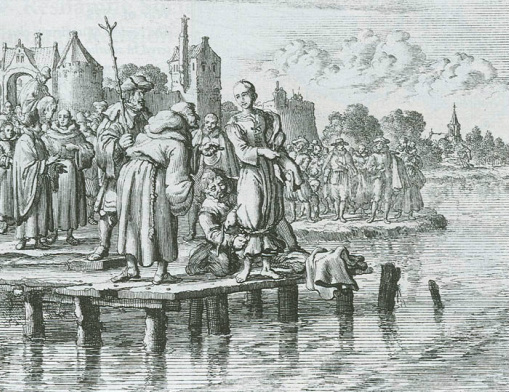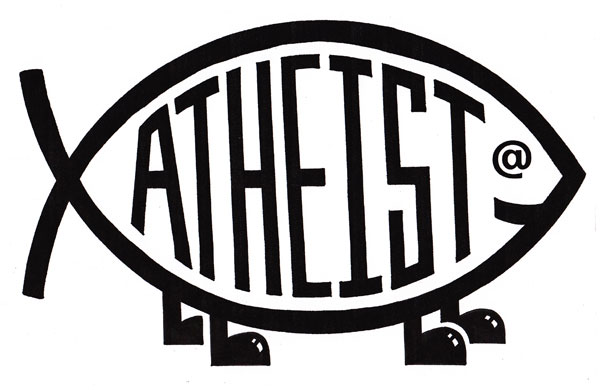I gave this message originally in 2015 when I started an extended series on the Confession of Faith from a Mennonite perspective which concluded in 2018.

This is a picture of a woman named Maria being martyred in 1552. Believers baptism was an important part of the early Anabaptist confession. All of the first Anabaptists were baptized a second time. When early Anabaptist leaders were caught and executed, they called the execution by drowning the 3rd baptism.
An online copy of the Mennonite confession of faith can be found here: https://www.mennoniteusa.org/who-are-mennonites/what-we-believe/confession-of-faith/
What is a confession of faith? Essentially, a confession of faith is an official document that has a number of statements about what a group believes. The purpose of our confession of faith is to unite us around our common beliefs and provide those outside our faith family with a basic understanding of who we are in relation to other Christian faiths.
In contrast to what a confession is, it’s good to answer, “What a confessions isn’t”: A confession isn’t scripture, yet it references scripture. A confession isn’t written in stone, it can change over the time. A confession of faith doesn’t say who belongs and who doesn’t, it’s a guide to who we should be as a community in our culture.
Confessions of faith are often a reflection or a contrast to the culture. For example, the culture in the US promotes individualism, materialism and nationalism and in response our confession of faith highlights community, stewardship and God’s Kingdom.
In theory, confessions of faith unite us by helping us interpret scripture in a consistent manner. Reading and interpreting scripture isn’t easy and we need to be careful who is influencing the way we understand what we read in the Bible. The confession guides us through interpretation of scripture and which scriptures have priority in our current culture.
In practice, while we might try to live up to the ideals of scripture as viewed through our confession of faith, we rarely, as a community, manage to live up to the standard. In the 1963 Confession, the authors stated that we should avoid the primary influences of our culture: at that time it was radio and TV. This was largely ignored.
I consider the confession of faith an important document. I have agreed to follow it. It doesn’t mean that I follow it 100% though. The goal, as it says in scripture, is to be perfect, just like our Heavenly Father is perfect (dwell on that for a year!). I am on a journey, working towards that goal.
When you agree to follow this confession of faith, I don’t assume that you are living it perfectly or that you agree with it fully. I would assume that if you taught in our church, you would teach from our confession’s perspective first. I also assume that I have permission to constantly challenge you with it and that you, in turn, will challenge me with it.
The history of confessions
Mennonites have a long tradition of confessions of faith. We have produced different official documents over the years, each of which have heavily influenced more modern versions. Even before these confessions, there were other documents that are not part of the Bible that influence our current confession. For example, we often refer to the Trinity, yet the term doesn’t come from scripture, it comes from other historical documents.
Here’s a listing of some of the historically influential documents: the Schleitheim confession, the Droderecht confession, 1921 Mennonite Confession, 1963 Confession and our current 1995 Confession of Faith in a Mennonite Perspective. Most of the older confessions are very concise. Our modern confession, because the price of printing is so cheap, is a small book, over 100 pages long.
Confessions change over the years. We do this as a reaction to changes in emphasis by our culture. If you look at past and current confessions of faith, it is important to note what has changed and why it changed, this is the fluid part of our faith that reacts to changes in our culture. What principles of our faith were being upheld during that time? Also, what parts remain unchanged, what parts form the foundation of our faith that not only unite us as Mennonites, but might also unite us to other Christians of other denominations?
I don’t do sermon series, but I have decided that I will slowly work through the articles of our confession. I won’t preach on the confession every time I preach, but in the next year (note: I preached on 24 articles of confession from 2015 to 2018), I will preach more from it than in previous years. Today I’m going to read to you the first Article of our confession of faith, which is titled “God”.
Confessing God
When I was a student in University, someone told me a story of another student that approached a campus pastor with the statement “I don’t believe in your God”. The pastor responded to the student, “Tell me about him, I probably don’t believe in him either”.
In scripture, it says that we are made in the image of God. The tendency that I have noticed most, myself included, is that we make God in our own image. If we are white, we make God white. If we had a bad relationship with our own father, we might view God as distant. The problem is, we put God into a box, and this is exactly what our culture wants us to do.
At this point I read through article 1 of the confession of faith. The link to the confession is at the top of this page.
I hope there was something in the confession of God that you weren’t comfortable with. This is only natural because God is much bigger than we can imagine.
One God: Father, Son, Holy Spirit

This is a picture of Noah’s ark being carried by a large wave. A question many people have a hard time reconciling is: how can God be loving when he destroys almost all people on earth with a terrible flood?
Normally, when we talk about God, we refer to God the Father, yet God is most fully represented as the Trinity: Father, Son and Holy Spirit. The Trinity is not fully explained in scripture, but there are hints throughout, which we use as a foundation for our understanding of God as One in the form of the Trinity.
There is a mystery in scripture that is hard to understand and it begins with God himself. How can God be One and three individuals at the same time? We are not made in the image of God the Father alone as it says in Genesis “Let us make mankind in OUR image, in OUR likeness”. We often think of our identity as individuals, yet our identity finds it’s root not in individuality, but in community, the Trinity. Part of the problem we, as individuals, have is we try to live like individuals when we weren’t made that way.
Our confession makes a very important statement in the second paragraph. We believe that God is most fully represented by his one and only Son, Jesus Christ. This is very important because it tells us how we prioritize scripture. If Jesus is the most clear expression of God, then when we read stories in the Old Testament, we need to consider the story with respect to Jesus’ life and teachings. Everything in scripture must be viewed through Jesus first.
This is partly expressed in the final paragraph, where the authors of the 1995 confession were very creative. They described many of God’s characteristics found throughout scripture but they did it by characterizing it as love. For example “God’s abounding grace and wrath against sinfulness are perfect in righteous love” OR “God’s unlimited justice and continuing patience with humankind are perfect in suffering love”. The story of Noah’s ark shows both these types of love, but they are more fully realized in the good news of Jesus.
Counter culture

Our culture, when it can, will mock our symbols. This is a mockery of the fish symbol often used by early Christians as a secret symbol. The intent, of course, is to produce a negative reaction from believers. How should you react, if you want to represent a God who loves us?
How does our understanding of God run counter to our culture? God, the Trinity, represents both individuality and community. What does our culture believe? How about our emphasis on Jesus? When you read the Old Testament, do you always think about it in the light of Jesus?
In what ways is our culture against God? How can we change our culture’s perspective?